Clean Pull: Technique, Benefits & Common Mistakes
Author:
Reviewed by:
(21 years of Oly Lifting experience)
Unlock your full potential by engaging with our experts and community! Have questions about your fitness journey or looking for expert advice on weightlifting techniques? Don’t hesitate — leave a comment below and Jacek Szymanowski will provide a personalized answer and insights to help you reach your goals.
Torokhtiy is reader-supported. Some links are affiliate links, and we may earn a commission at no extra cost to you. See our disclosure page for details.
If you’re looking to add some power to your lifts, the clean pull will become a new must-have. Although many people perceive it as a stepping stone to the clean and jerk, it’s actually a powerhouse exercise that builds explosive strength.
What makes it so special? For starters, it zeroes in on the initial phase of the clean and this targets your posterior chain – glutes, hamstrings, and lower back. These muscles are crucial and give you the oomph to lift heavy and fast.
It’s not all about the raw strength, of course. The clean pull is a fantastic way to hone your technique. When you focus on the pull, you can perfect your bat path, improve timing, and make sure you’re hitting all the right positions without catching the bar. Plus, since you’re not worrying about the catch, you can load up more weight and push your muscles to their limits.
Let’s dive into more details on it!
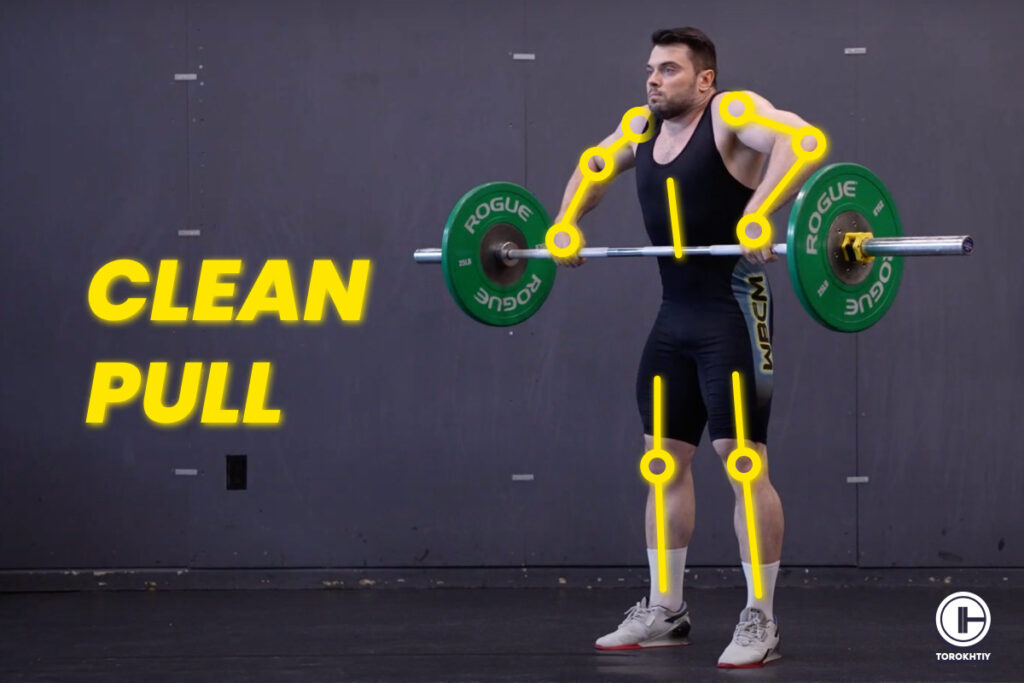
Whether you are an experienced weightlifter or just a beginner, the clean pull is a must-have exercise in any training program. Even if you’re not an olympic weightlifter but you’re an athlete or just looking to improve your strength and power, Clean Pulls will offer you a lot – there is a big carryover.
Save it for easy access!
Bookmark this page now to access the program and instructional videos anytime, anywhere.
Stop wasting time searching during your gym sessions.
What Is A Clean Pull?
The power clean pull is an essential exercise for strength, speed, and power enhancement in the clean phase. The strength reserve gives a chance to work with heavier weights (than in the clean) and make headway as a result. This exercise also can be used for the pull balance and angles correction or as a drill for the clean movement learning.
Which Muscles Are Used in a Clean Pull?
Сlean pull exercise involves most of the upper and lower body muscles, including quads, forearms, calves, shoulders, glutes, triceps, and whole posterior chain.
The clean pull is a great full-body movement choice since it will use almost all of your muscles in some capacity. However, with this exercise, a few important groups of muscles stand out from the others.
1. Quads
The quads are crucial in the clean pull and provide the necessary leg force to lift the bar off the ground and push the core upright until you reach full extension.
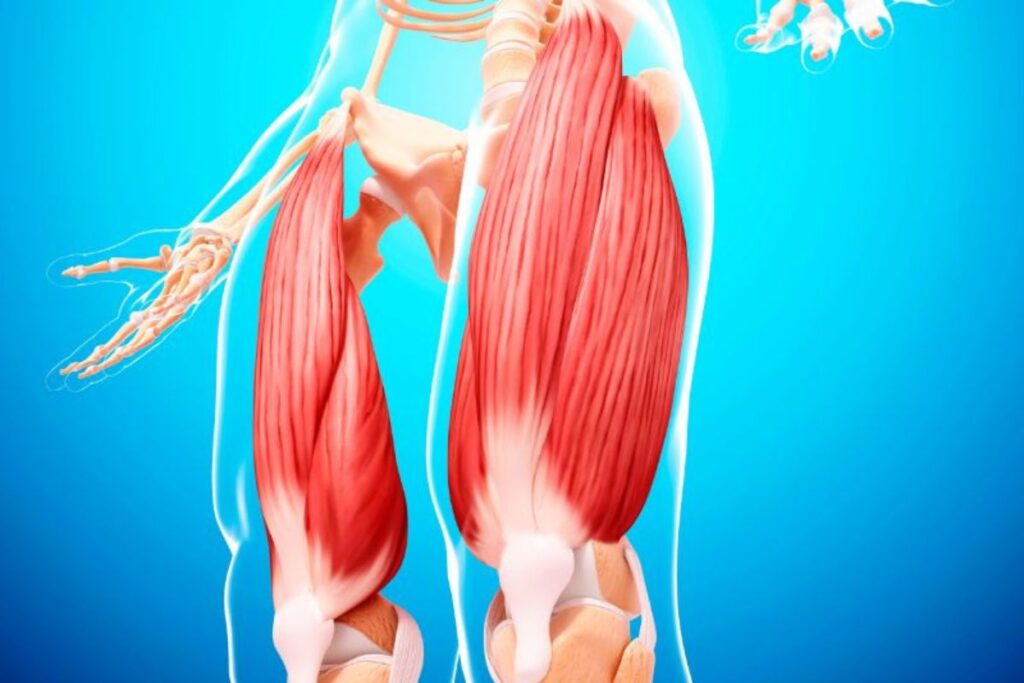
2. Glutes and and Hamstrings
These muscles form part of the posterior chain and they provide structural support. The glutes and hamstrings are essential for hip extension and enable max bar height during the lift.
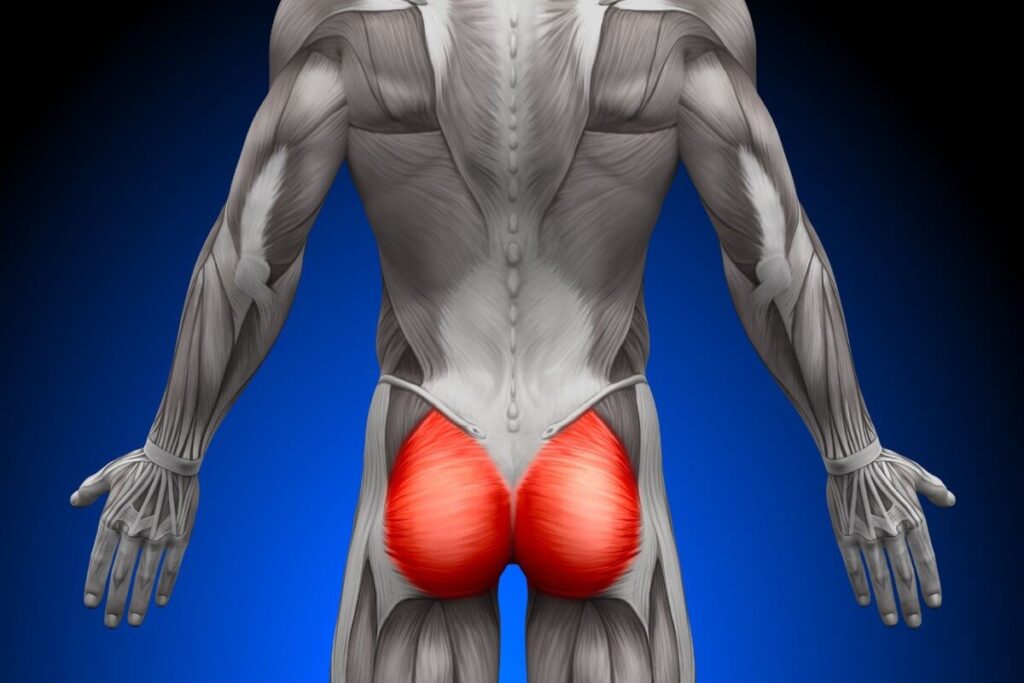
3. Core
The core muscles, including abs and obliquesm (and much more), stabilize the body throughout the lift, making sure you can keep your balance and maintain good posture.
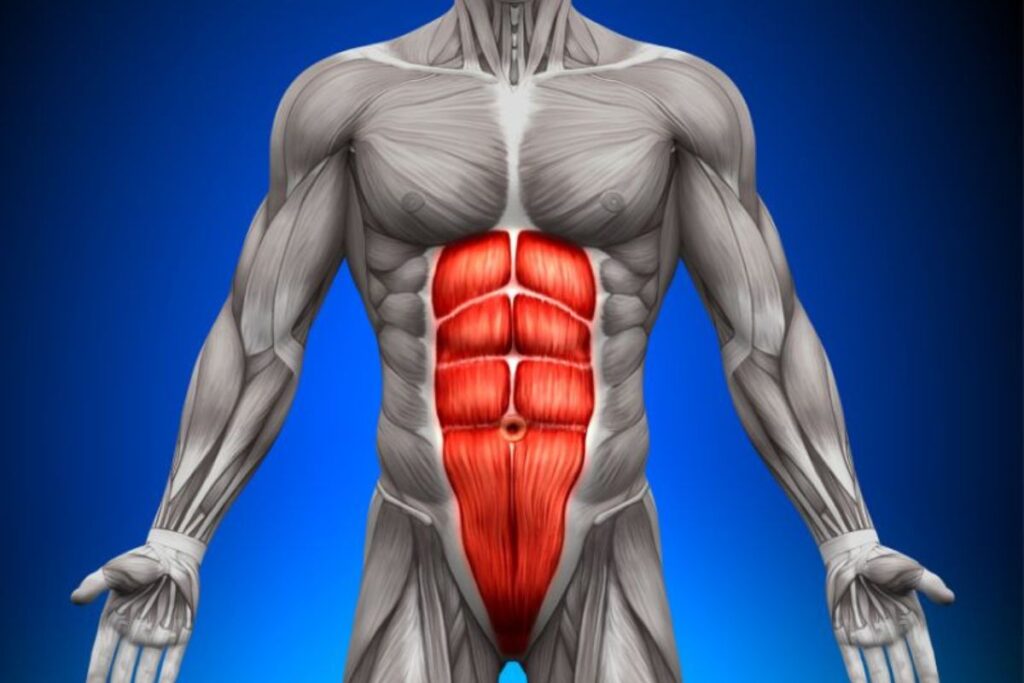
4. Lower and Upper Back
The lower back supports heavy weights, while the upper back works to maintain the bar path and contributes to the shrug at the end of the lift.
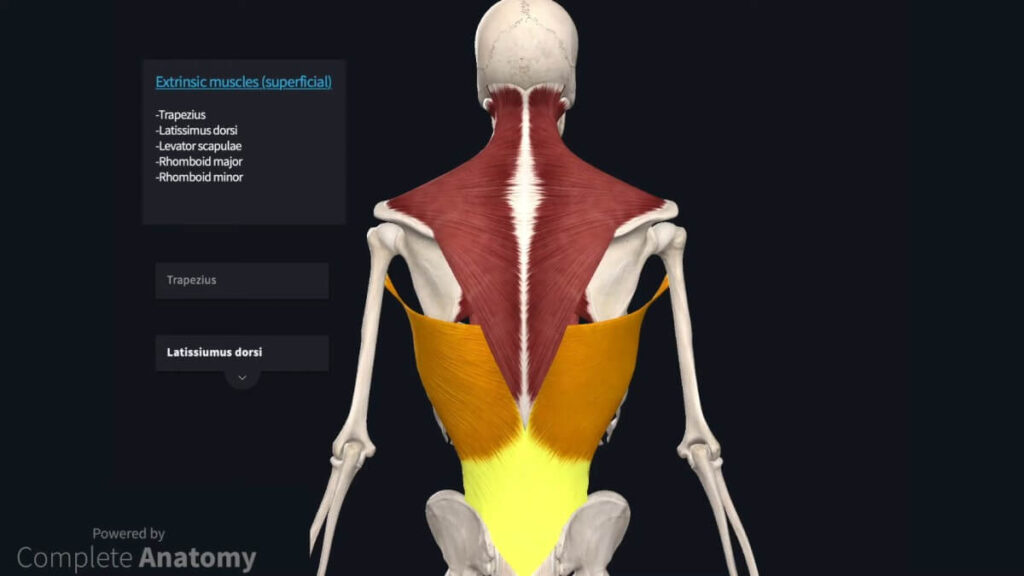
How to clean pull?
Clean pulls technique just like clean and other olympic lifts can be broken down into a few phases. Set up a starting position: hip-width stance, a barbell over the middle of the feet, shoulders over the bar, the grip slightly wider than the shoulders.
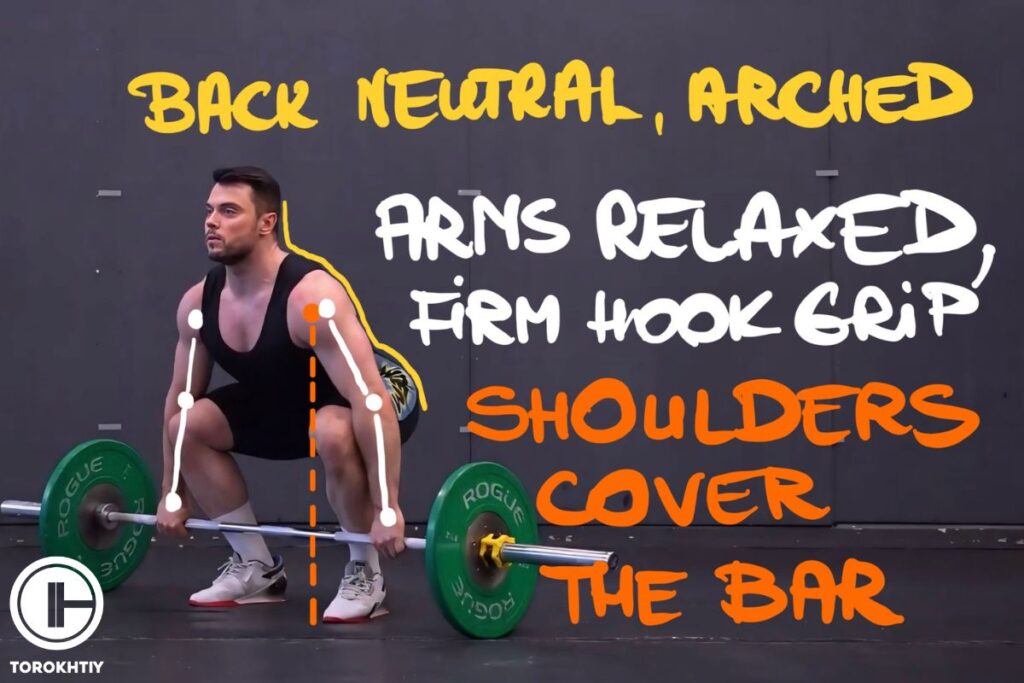
1st Pull
Push the legs against a platform to initiate the movement. Keep the balance on the whole foot and maintain the same back angle till the bar reaches the middle of the hips passes your knee line.
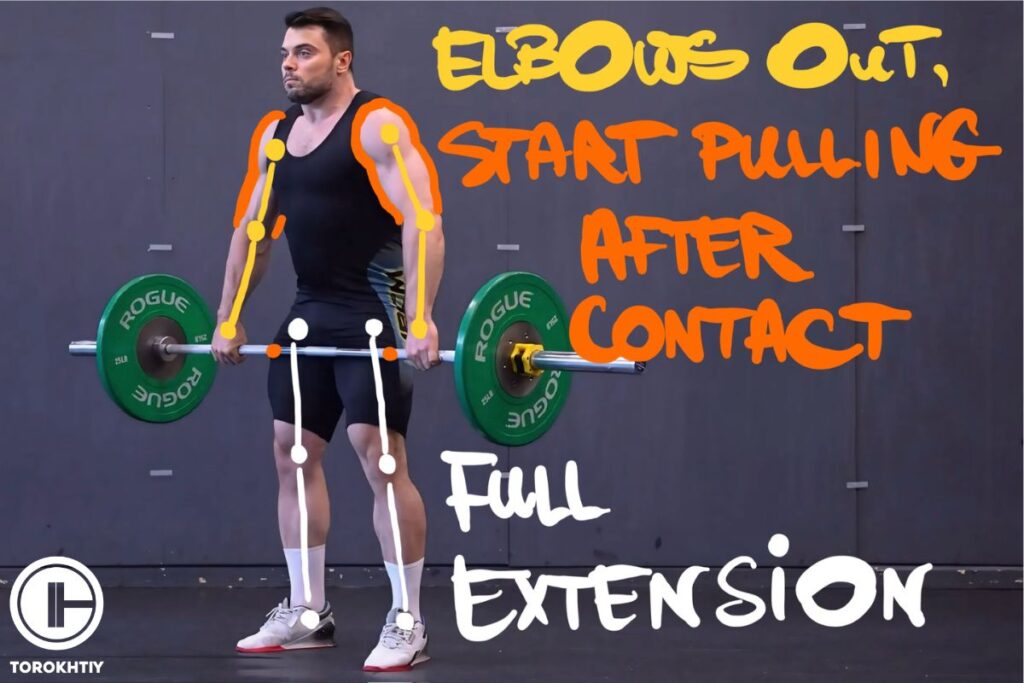
2nd Pull and Power Position
When the barbell goes above the knees the 2nd pull starts. This is when everything needs to start being aggressive and powerful. Bar reaches the middle of the hips. From this point and up to the top part of the hip keep the shoulders over the bar.
Accelerate aggressively, stretch the knees and hips powerfully, holding the bar as close as possible (you may even let it touch the top hips). The movement must be vertical concentrating on the full extension. Do not involve your arms – relax them.
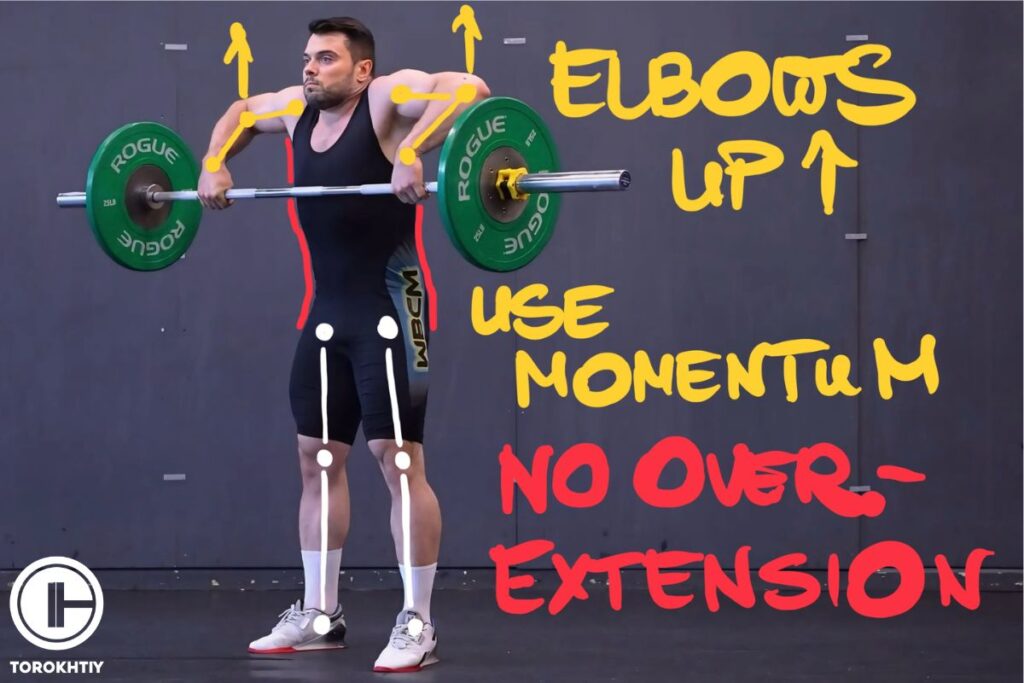
After the explosion in the second pull (leg and hip extension), raise the shoulders up to the ears (do clean shrug pull) to continue the upward movement as close to the body as possible. As you push against the platform aggressively, your heels may go up in the final stage (though it is not necessary).
3 Common Mistakes in Clean Pull Exercise
Although the clean pull is not as technically challenging as a snatch, it is also not your typical barbell workout. Be aware of these common technical mistakes so you may easily avoid them.
❌ Considering It a Deadlift
Don’t misunderstand; the clean pull isn’t a version of the deadlift. Don’t try to put your deadlift skills to the clean pull; you need both to function together harmoniously, but deadlift and clean pull have a bit different technical details, like starting position, triple extension, when to fully extend your knees and more… Do both but don’t confuse them.
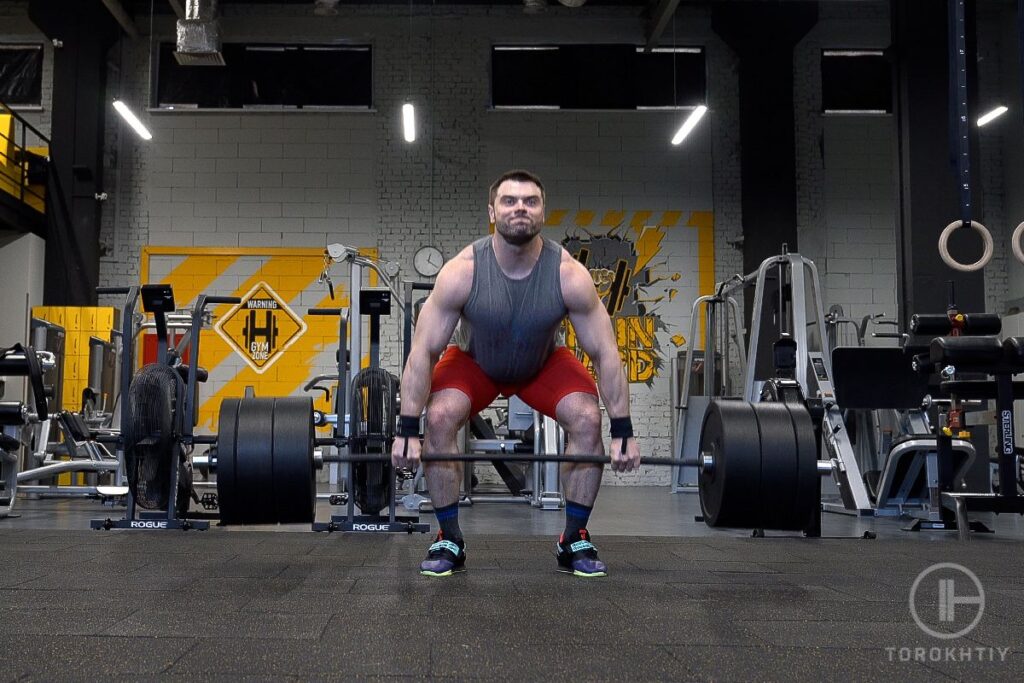
❌ Early Rise to the Toes
Making oneself “tall” and building vertical momentum on the bar is essential, but you must keep any tense movements to a minimum.
By rising to your toes first before bar has wrapped around your upper thigh, you are attempting to hurry into your extension and “skip” the stages of the clean pull. This might knock you off control & balance and reduce the amount of power you can exert.
If your whole foot sole is in contact with the platform, pushing into it will be simpler. Avoid thinking of it as a just calf rise; instead, let your heels naturally lift.
❌ The Use of Arms Muscles
Make no mistake: your quads & glutes produce the vast bulk of the force and motion produced during the clean pull. Your upper body does, however, get involved in directing the barb upward in a straight way.
This does not imply that you should start pulling on the barbell with arms before you have used your legs to their maximum potential. You shouldn’t consider the clean pull to be an upright row since it is not. When your hips, knees & ankles are fully extended, shrug firmly to gain an additional height of bar.
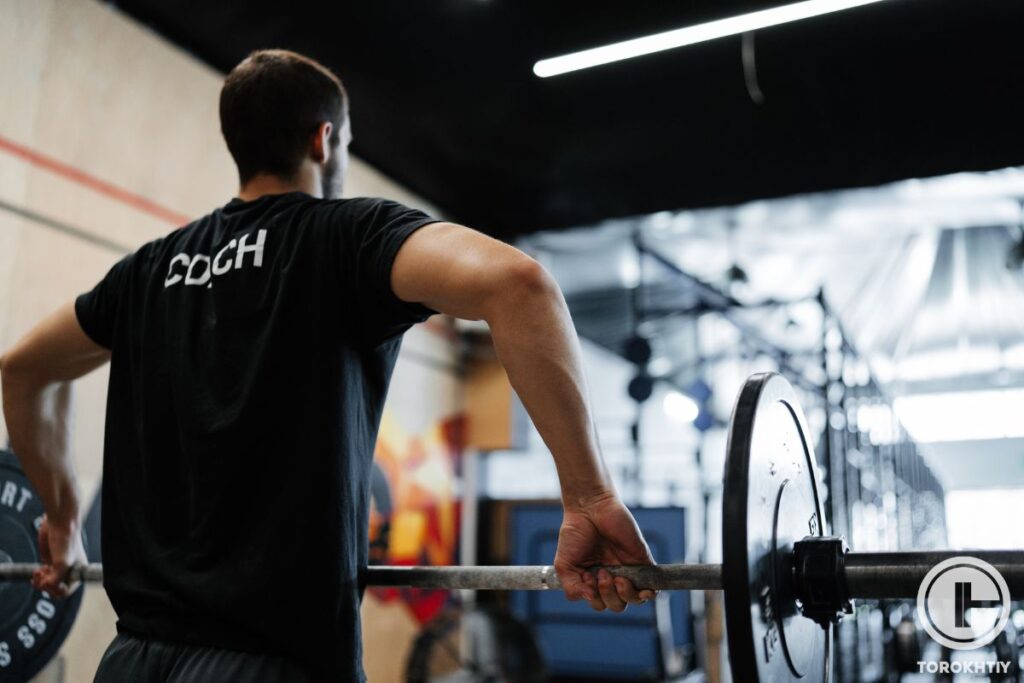
Clean pulls workout planning
As a rule, athletes perform 3-5 sets of clean pull for 1-6 reps within 80-110% from 1RM in the clean & jerk but feel free to experiment with weight, based on force-velocity curve, to stimulate desired adaptations. Do not work with heavier weights if you can’t keep the right position and velocity in the final extension.
As it is a strength exercise, you better do it at the end of a workout but, as it still demands some speed and technique, it is worth performing it before basic strength work such as squats. You may also use barbell clean pull with light weights before the clean for some technical work.
During the preparatory period, try out such sets: the clean pull + the clean, or the clean pull + the clean + the jerk. Such heavy work improves both strength and capacity, building a firm base for new results. Performing it with adequate load may also improve your speed and rate of force development.
Follow us!

Free!
Get a 2-week Weightlifting Program as a bonus for the subscription to kickstart your training plan!

Free!
The key benefits of the clean pull
The clean pull is the main exercise that provides an explosive strength reserve for weightlifters. It is a classic example of a so-called triple extension (the quick simultaneous hip, knee, and ankle extension). Therefore, this exercise is on the training list in all kinds of sport that need strength, power, and vertical acceleration: sprints, mixed martial arts, sport games, etc.
While performing weightlifting clean pull, an athlete can lift far heavier weights than in the clean, you don’t need to be able to clean at all to be honest. Basically, the first parts of both clean and pull are nearly the same. Still, a rather short movement makes it possible to build a strength reserve for lifting heavier weights in the clean & jerk. And these are main clean pull benefits.
6 Clean Pull Variations
There are plenty of the clean pull variations both for weightlifting and other kinds of sport: with a barbell, kettlebells, and dumbbells.
1. Paused Clean Pull
The main purpose of pauses is to complicate particular positions or to solidify specific positions or patterns. Vary the duration from 2 to 6 seconds and use pauses in different phases:
- at the lift-off;
- at the knee level (below or above it);
- at the explosion in the second pull;
- at the full extension standing on the toes.
Such pauses may be used within the upward or downward movement depending on the goals. For example, if an athlete goes up on the toes too soon, they should try this complex: 1 pull up to the explosion position with a 3-4-second pause + slow lowering + the clean pull. Mind that paused work is really exhausting so choose a reasonable load.
2. Hang Clean Pull
This variation also has different starting positions: from below/above the knees or the middle of the shin. On one hand, such work increases the training density and TUT and, on the other hand, its short amplitude gives a chance to focus on a particular part of the movement – like a 2nd Pull.
3. Clean High Pull
This exercise basically copies clean pulls but involves more active arm work and maximum extension. However you won’t be able to lift as heavy as with regular clean pull.
Benefits: improves speed, power, strength, coordination, and posture at the same time. It focuses on the full extension in the second pull (as the regular clean pull does) but additionally improves arm strength and technique before the turnover and elbow rotation.
Moreover, clean high pull aims to increase the aggressiveness and power of the vertical extension in the clean. Also, beginners can use light clean high-pulls to learn how to pass the force from legs to arms.
4. No-Foot Сlean Pull
Professional athletes perform the no-foot clean pull from time to time to solve the problem of going up on the toes too soon. This mistake significantly turns down the acceleration and explosion in the second pull.
5. Dumbbell Clean Pull
This variation is often used by athletes in other explosive strength kinds of sport such as Functional Fitness, strongman, and sport games too. If you want to focus on stabilizers, add some functional and coordination complexity, then pick a couple of heavy dumbbells for the clean pull. You will definitely like it. Don’t drop the db on your foot tho!
6. Trap Bar Clean Pull
A highly well-liked Clean Pulls variation uses a trap bar (also known as a hex bar) in place of a standard barbell. It allows you to redistribute the weight from the front to your sides, which in turn puts less stress (and shearing forces) on your lower back.
It also often allows an athlete to initiate the movement from a higher stance because the trap bar usually has handles much higher than it would be with regular bar grip.
The clean pull can be also performed from blocks or with an athlete standing on a plate (also known as clean pull from deficit), with a static or dynamic start, with straps or without them, with different velocities within the upward or downward movement. By the way, slow barbell lowering (eccentric work) significantly strengthens core muscles and foot balance.
In Google, you can come across different word combinations such as functional fitness clean pull, clean pull functional fitness, pull clean functional fitness. Believe me that the clean pulls for weightlifting and Functional Fitness are the same so learn the snatch, clean & jerk and other exercises technique from professional weightlifting coaches.
The clean pull and the deadlift difference
A very common question: what is the difference between the clean pull and the deadlift?
Though the clean pull and the deadlift involve the same muscles, there are some important differences between them.
The starting position: athletes may use mixed grip for the deadlift, do a wide-stance sumo variation, and bend the upper back which is not allowed at all in pull cleans.
Usually the foot positioning is different with deadlift often having narrower stance. There is triple extension in clean pull and there is none in deadlift. The moments of full extension of specific joints like hips and knees are also a bit different between clean and deadlift.
The range of motion: though the deadlift uses a strictly vertical movement, the clean pull includes 3 phases that form a slight curve. The first pull is up to the knees, the second one is up to the final acceleration, and the explosion is an aggressive contact with the hips, powerful knee and hip extension.
The explosive element: pull clean is faster and accelerates through the whole trajectory. Yet, mostly because of heavier weight, you lift a bar slowly and control it more precisely in the deadlift. You can do a deadlift very slowly, you can’t execute a good clean pull without enough speed.
The right technique is essential for safety and effectiveness regardless of the movement you are performing. Always choose the load which allows you to control the body through the whole movement.
Who Should Add The Clean Pull In Their Routine?
You are given enough of a cause to begin exploring the clean pull if you are already convinced of its benefits. Fun is, after all, a perfectly acceptable incentive when working out in the gym. However, take into account if you belong to any of these groups; in that case, you could be especially well-suited to make it a part of your training program.
1. Novice To Olympic Weightlifting
Beginners should devote a significant amount of their gym time to practicing the clean pull and the snatch pull. Pulling just makes up one-half of the clean, what you do after the bar off the floor may make or destroy the lift. You may acquire the proper technique by including pulls into your workouts.
2. Experienced Weightlifters
Though not often for the same reasons as a novice, skilled weightlifters also do the clean pull. If you’re quite experienced with the bar, you may utilise the clean pull as main or an accessory exercise to enhance overall lower body strength.
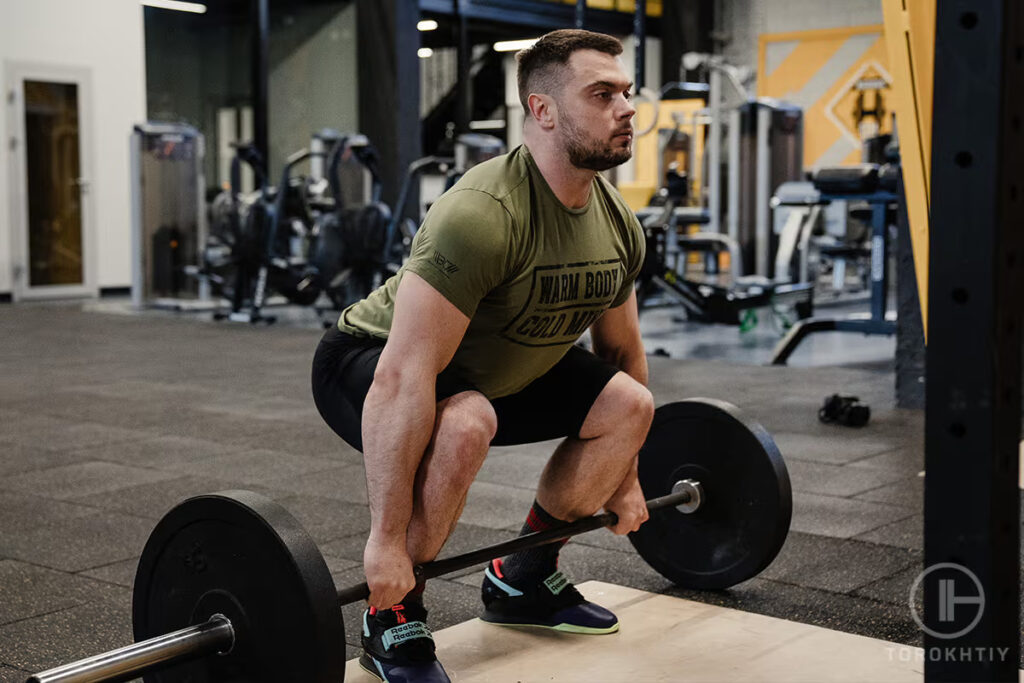
3. Other Sports Athletes
The majority of major sports, including American football, basketball, track, and others, required workout in the gym or weight room at least a couple of times each week. Movements such as the clean pull were also frequently used in numerous sports because they help build power, strength, balance, stimulate hypertrophy and improve physical coordination.
There is a big carryover to other sports making a clean pull a versatile tool you can use whenever you have access to a barbell.
Conclusion
The clean pull will build explosive strength, hone technique, and improve your lifting performance in general. It focuses on the initial phase of the clean and engages a lot of different muscles at the same time. Its ability to improve posture, increase technical accuracy, and develop overall strength makes it a very versatile exercise that will work for both beginners and those that are experienced.
How has the clean pill affect your lifting progress? Have you experienced improvements in other lifts and/or sports from doing clean pulls? What tips do you have for beginners who are trying to master the clean pull?
Share anything you can think of in the comments and let’s chat!
Also Read:
- Power Clean
- CLEAN & JERK
- Clean + Front Squat
- Clean and Press
- Hang Clean Pull: How To, Benefits & Variations
- Hang Snatch High Pull: How To, Benefits & Variations
- Clean Warm Up: Best Exercises & Routine Example
References:
- Photos by Torokhtiy Media Team; sciencephoto, Canva.com; decade3d, Canva.com; levelanskiy, Pinterest.
Why Trust Us?
With over 20 years in Olympic weightlifting, strength training, nutrition coaching, and general fitness our team does its best to provide the audience with ultimate support and meet the needs and requirements of advanced athletes and professional lifters, as well as people who strive to open new opportunities and develop their physical capabilities with us.
By trusting the recommendations of our certified experts in coaching, nutrition, and sports training programming, as well as scientific consultants, and physiotherapists, we provide you with thorough, well-considered, and scientifically proven content. All the information given in the articles concerning workout programming, separate exercises, and athletic performance, in general, is based on verified data.
The product testing process is described in more detail here.
Author: Jacek Szymanowski
Certified Nutritionist,
M.Sc.Eng. Biotechnology
Performance Architect,
Strength and Conditioning Specialist
With over 30 years of fighting experience, specialization in nutrition coaching for athletes, and expertise in metabolic health and dietary strategies, Jacek offers a comprehensive approach to optimizing your performance and well-being. Backed by a Master of Science degree in Biotechnology, Jacek remains at the forefront of scientific advancements, ensuring that his coaching is always evidence-based and up-to-date.
Reviewed by: Oleksiy Torokhtiy
Olympic Weightlifting Champion
Best Results: Snatch – 200 kg,
C&J – 240 kg
Oleksiy Torokhtiy is a professional athlete boasting 20 years of experience in Olympic weightlifting. With multiple European and World titles under his belt, he has showcased his prowess in two Olympic Games (Beijing 2008 and London 2012). Upon concluding his illustrious career, Oleksiy dedicated himself to coaching. By 2022, he had conducted over 200 weightlifting seminars worldwide. He is the visionary behind an international sportswear and accessories brand known for its motto, “Warm Body Cold Mind.” Additionally, he is an esteemed author and the creator of a series of training programs and eBooks.
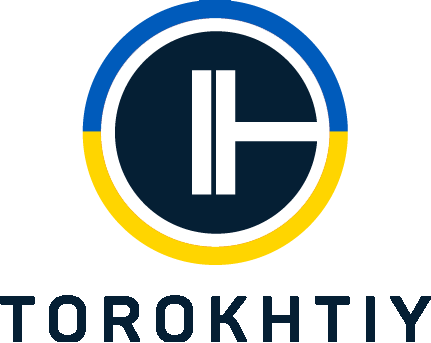



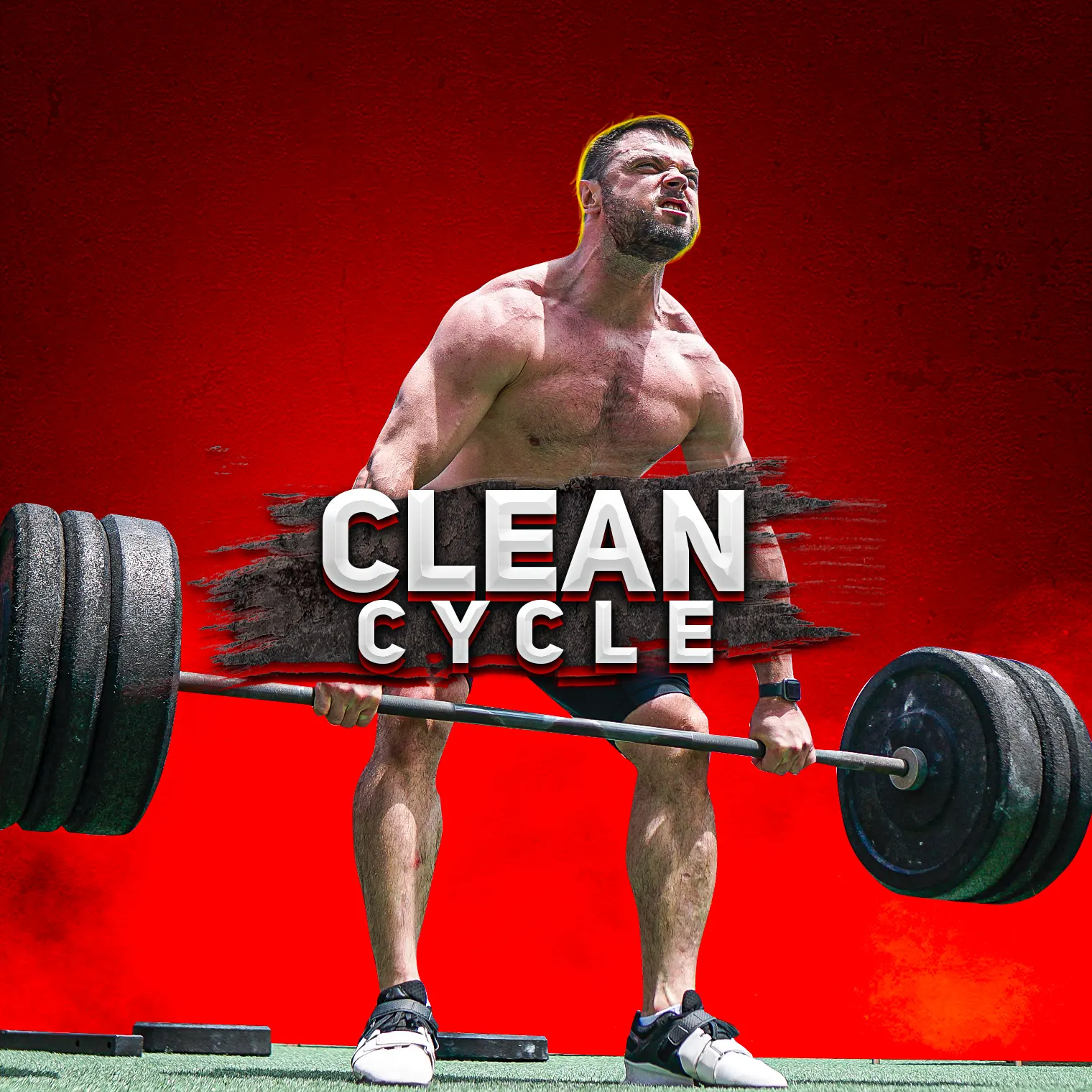
Still have questions after reading our article? Unlock your full potential by engaging with our experts and community! Don’t hesitate — leave a comment below and Jacek Szymanowski will provide a personalized answer and insights to help you reach your goals.